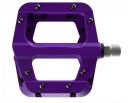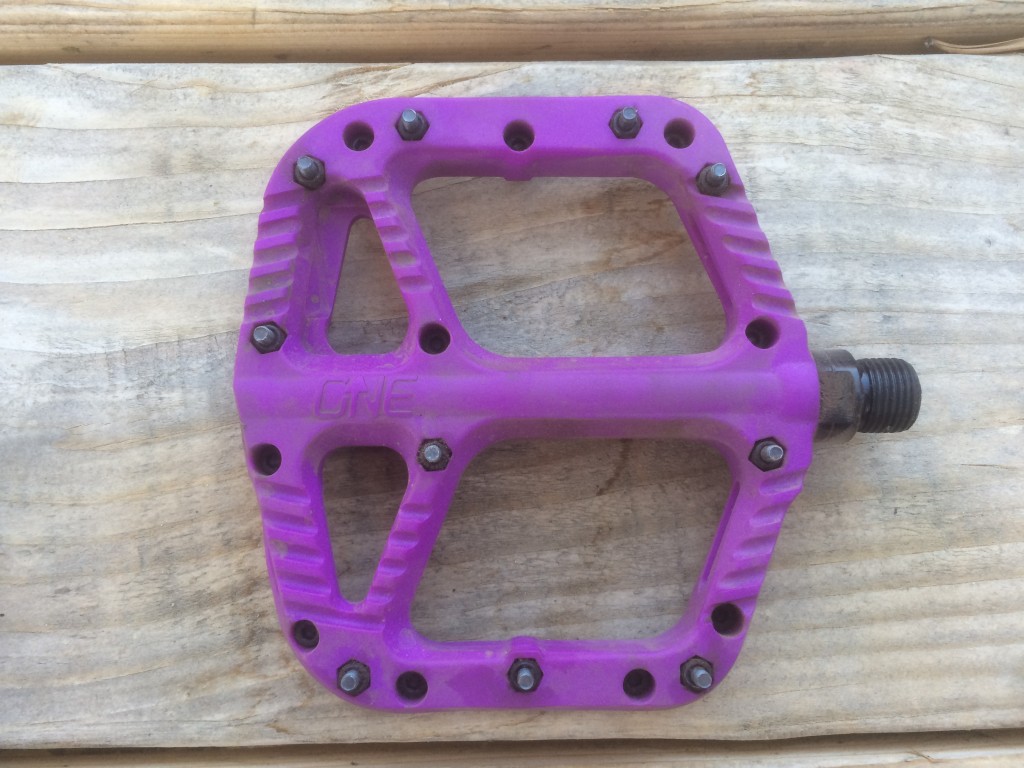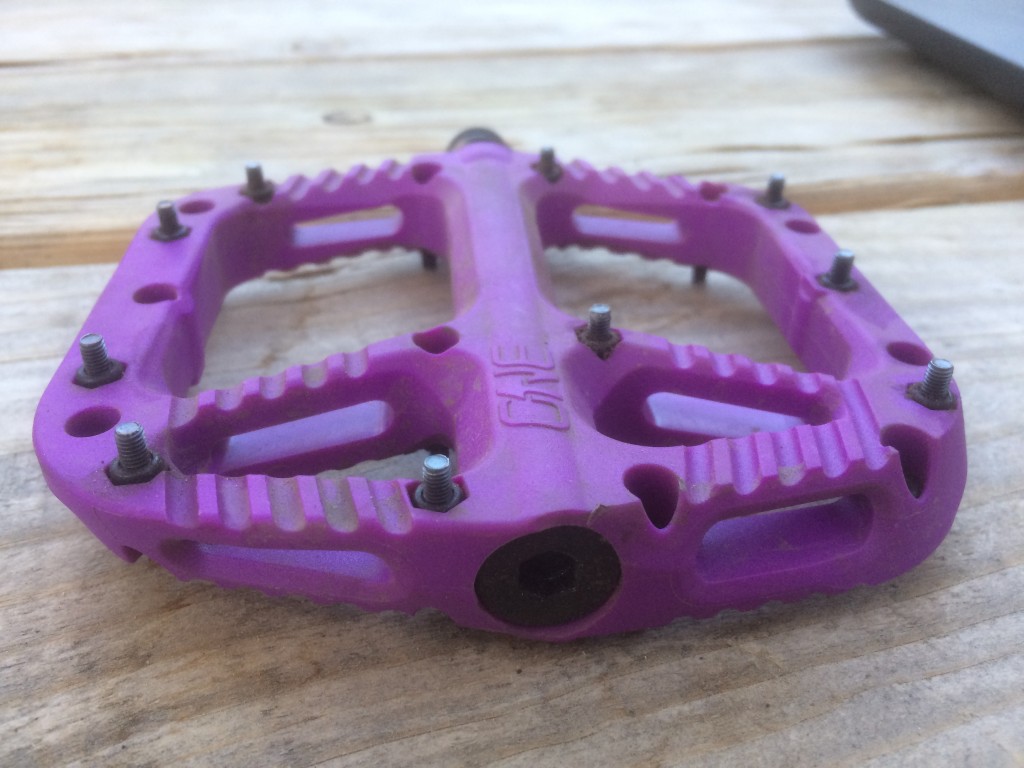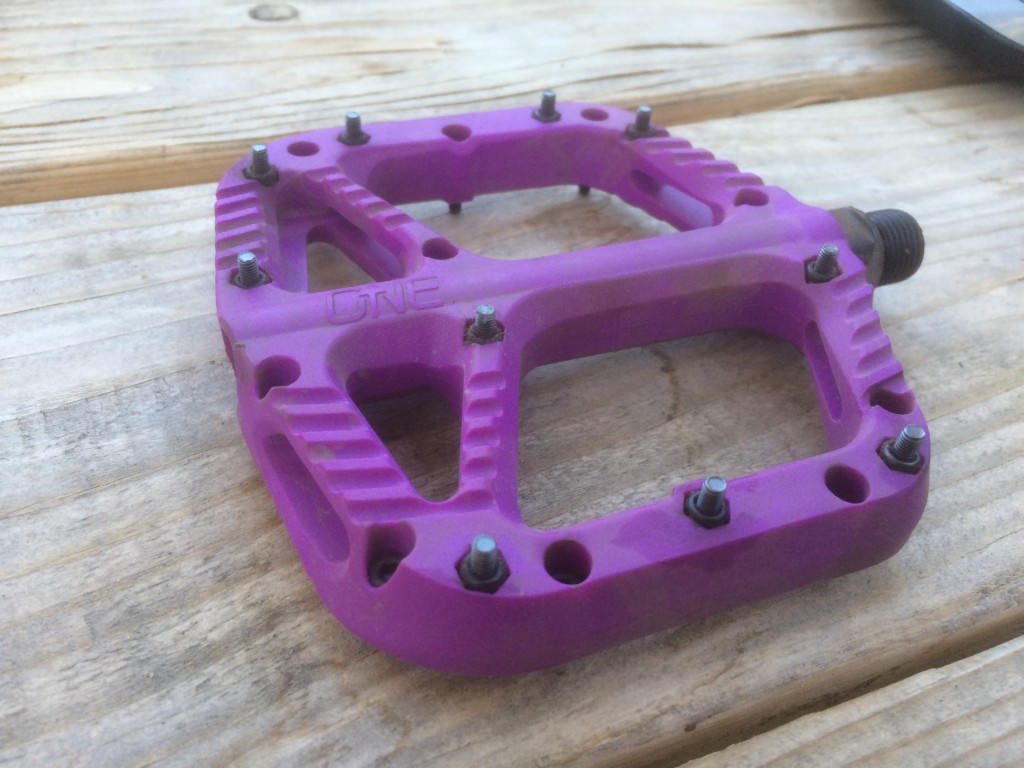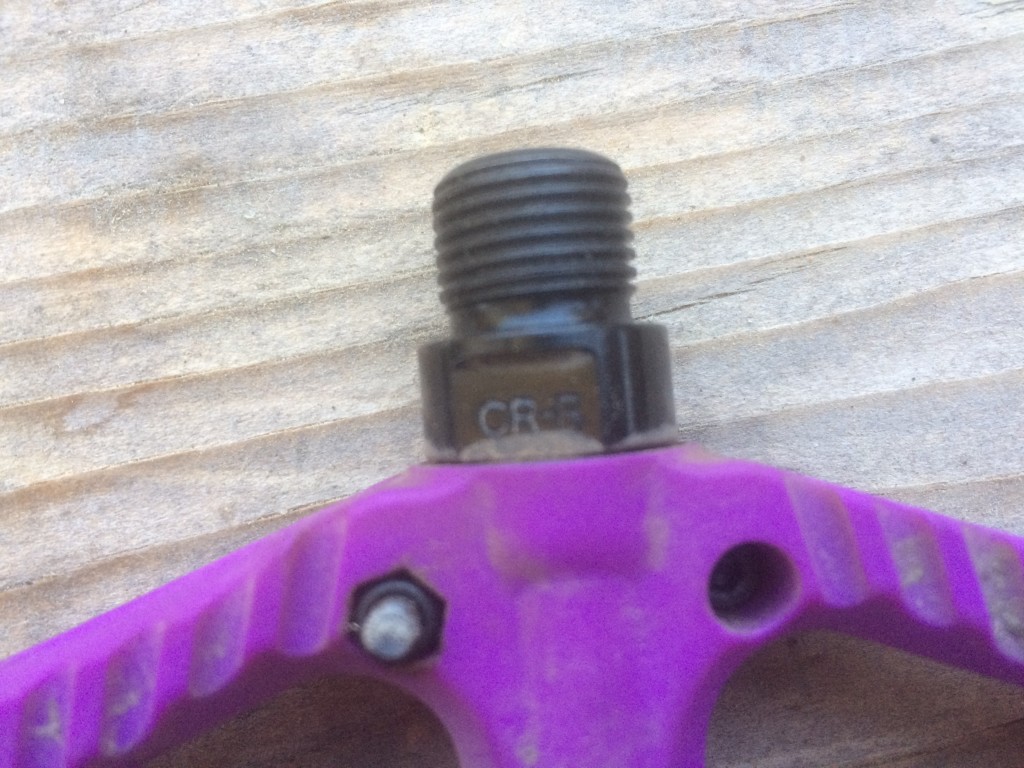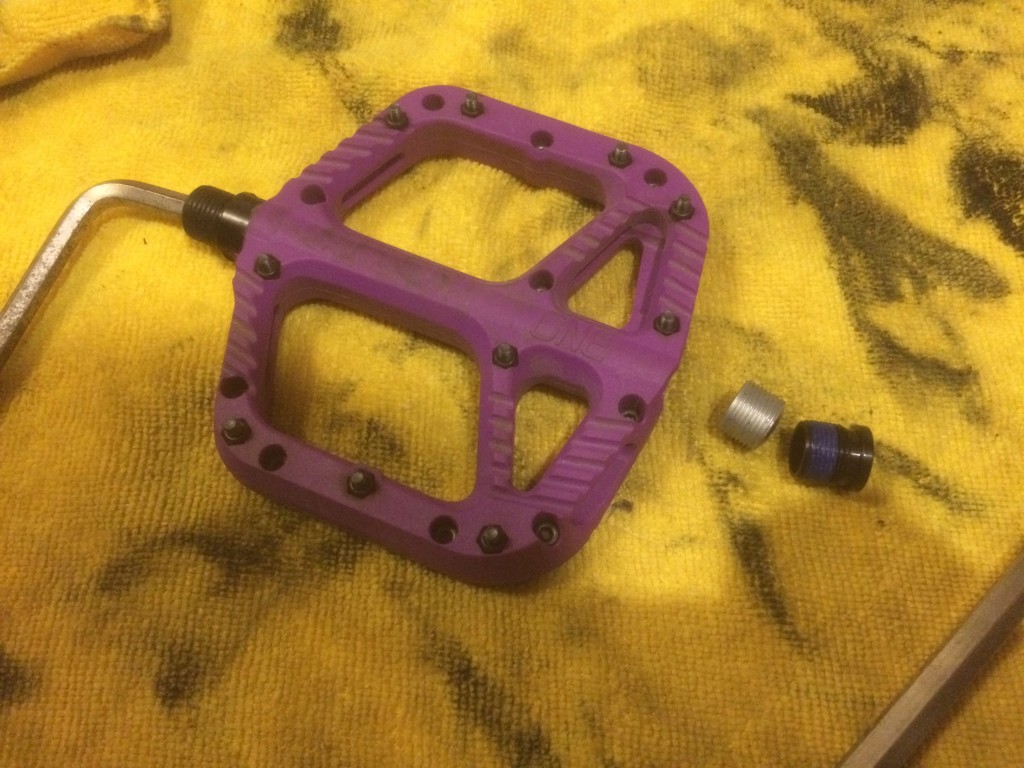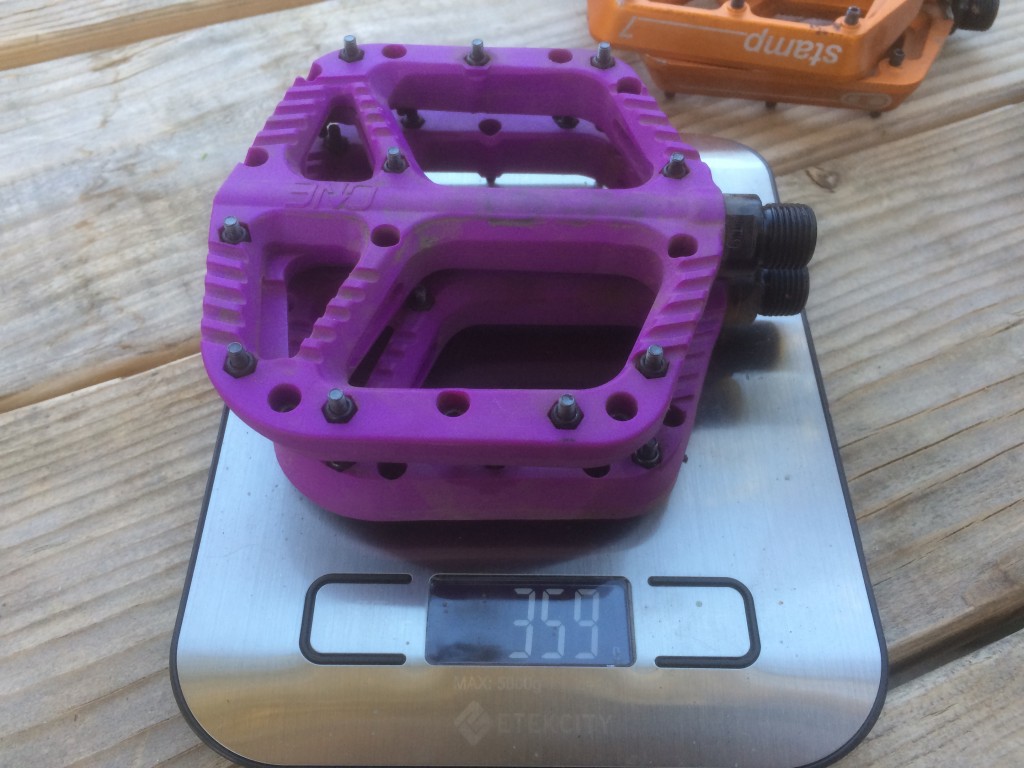Our Verdict
Compare to Similar Products
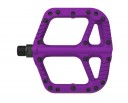 This Product
OneUp Components Composite | |||||
|---|---|---|---|---|---|
| Awards | |||||
| Price | $39.99 at Evo Compare at 4 sellers | $34.74 at Amazon Compare at 4 sellers | $27 List $22.94 at Amazon | $22 List $21.89 at Amazon | $30 List $29.99 at Amazon |
Overall Score  |
|||||
| Star Rating | |||||
| Bottom Line | A quality composite pedal at an outstanding price point | Less-expensive flat pedal option for those who like to put their equipment to the test | A budget oriented pedal that offers adequate grip and a midsize platform but may be less apealing compared to established brands | An inexpensive pedal that works great as a commuter, but less suitable as a true mountain bike pedal | Does not match up with similar priced budget pedals in terms of grip and mobility but still finds value within commuter style applications |
| Rating Categories | OneUp Components Co... | Race Face Chester | Fooker Nylon Fiber | CXWXC CX-930 Pedals | RockBros CNC Aluminum |
| Grip and Traction (25%) | |||||
| Platform (25%) | |||||
| Mobility (20%) | |||||
| Servicing (15%) | |||||
| Weight (15%) | |||||
| Specs | OneUp Components Co... | Race Face Chester | Fooker Nylon Fiber | CXWXC CX-930 Pedals | RockBros CNC Aluminum |
| Measured Weight (per pair) | 359 g | 358 g | 370 g | 365 g | 301 g |
| Traction Pins (per side) | 10, 2.5 mm hex head bottom loading | 8, 2.5 mm hex head bottom loading | 8, 2.5 mm hex head bottom loading | 8, e4 torx top loading | 8, e4 torx socket top loading |
| Measured Platform Dimensions (millimeters) | 114 mm x 104 mm | 110 mm x 101 mm | 110 mm x 100 mm | 104 mm x 102 mm | 99 mm x 94 mm |
| Platform Profile (millimeters) - not including pins | 13.8 mm leading and trailing edges, 16.9 mm at axle | 14 mm leading and trailing edges, 17 mm center of spindle | 14 mm at edges, 18 mm at axle | 15.5 mm at edge, 18mm at axle | 9 mm at edges, 17 mm at axle |
| Concavity | slight convexity | 3 mm difference from effective edges to center of pedal | 4 mm difference from effective edge to center of pedal | 5mm difference from effective edge to center of pedal | 8 mm difference from effective edge to center of pedal |
| Q Factor / Distance from cranks to furthest pin | 106 mm | 103 mm | 103 mm | 104 mm | 102 mm |
| Bearings | DU cartridge | Cartridge bearings and DU bushings | 3 sealed cartridge bearings | sealed cartridge bearing | Sealed bearings |
| Body Material | Nylon Composite | Nylon Composite | Nylon Fiber | CNC Aluminum | CNC Aluminum |
| Pedal Wrench Type | 15 mm pedal spanner, 6 mm hex | 15 mm pedal spanner, 8 mm hex | 8 mm hex | 8 mm hex | 6mm hex |
Our Analysis and Test Results
The OneUp Composite pedals are one of those products that posted a solid score in all performance metrics. They never quite blew our collective minds in any single area. However, when you mix in the stunning price point, these pedals are a no-brainer for the budget-focused rider or those who prefer a composite pedal to a metal one. As a result, the OneUp Composite pedals is one of the best composite pedals we tested.
Performance Comparison
Grip/Traction
The Composite pedals offer above-average levels of grip and traction. Two different testers rode these pedals. One tester with Specialized 2FO Roost flat shoes that use SlipNot rubber was slightly more impressed than the tester with Bontrager Flatline shoes. Still, both testers agreed the OneUp pedals cling to their soles better than most.
Ten bottom-loading pins per side are distributed across the platform and protrude 4.6mm. The placement is good, with four pins at the front, three pins at the back, and three more pins along the axle. The pins are well-placed, and the outboard ones offer a good feel when bouncing through a rock garden or dipping into a nasty corner while the center pins help to keep your for from slipping on the axle. OneUp also machines some shallow textured grooves into the body of the pedal in the open space between the perimeter and axle pins. When things get super chunky, the grip is fine, but some of the top performers in this metric are noticeably more grippy. When you are paying attention and really dropping your heels into a nasty downhill, the grip is solid and reliable.
Our main concern was on flatter, bumpy sections and techy climbs where riders may be apt to pay less attention. We slipped pedals quite easily as we worked up awkward sections of the trail and cranked over flat trail littered with roots and rocks. If you are really focused, it shouldn't be an issue. That said, two hours into a long ride, we found these pedals required a little more attention than the grippiest competitors.
Platform
The OneUp Composite pedals have a 114mm x 104mm platform. This puts them in the larger end of the platform size spectrum, especially in terms of their length. The leading edge of the platform is 13.8 mm thick while the platform is 16.8mm thick at the axle, giving them a very slight 3mm convex shape. The crank arm's distance from the outermost pin is 106mm.
The platform is relatively large and nearly symmetrical without being excessively wide. Testers felt they were always able to get their foot into a good position. Whether it was a quick dab on an awkward climb or dropping a foot to drift a corner, it's easy to find a good spot on the platform. The convex shape of the pedal is a matter of personal preference. Our tester with the Specialized 2FO shoes noticed this shape more than the tester with the Bontrager Flatline shoes with a very stiff sole.
The elephant in the room is that the OneUp Composite Pedals are on the thicker side of the spectrum. At 16.8mm at the axle, the platform is chunkier than the thinnest competitors, but with 13.8mm leading edges, they are still much slimmer than some. The leading edges are also slightly angled to help reduce the platform's profile. It will depend on the terrain you ride and your riding style, but we didn't experience excessive pedal strikes while testing. It is also worth mentioning that these pedals are thinner than the other composite models we tested.
The composite material, or plastic, reacts well to pedal strikes. While an aluminum pedal has a grinding feel, the plastic feels a little more slippery and tends to glance off rocks a little more easily than aluminum. This could be the difference between a crash and a near miss.
Mobility
Foot mobility was predictable and surprisingly easy with the OneUp Composite pedals. While we may not have found these to be the grippiest pedals on the planet, it was easy to reposition the foot heading into a rock garden or corner. This is quite important as nobody wants to roll into the gnar with their foot in a less-than-ideal position.
The pin pattern is relatively open in the center of the pedal with 3 pins along the axle. While there isn't exactly a lot of dead space in the center of the pedal, we found that it was relatively easy to shift your foot position on the fly. All it takes is a small unweighting of the pedal and a quick bounce to adjust the angle or the fore/aft position of the foot. Riders with shoes with tackier compounds may have a harder time moving the foot, but both testers were impressed with the ease of mobility with these pedals.
These pedals had appropriate levels of mobility on the axle. They didn't drag too hard when you are trying to kick them into the right position. They also didn't spin so freely that we were concerned about having the pedal poorly oriented when we were forced to pull our foot off the pedal and then get it back on in a hurry. We felt confident replacing our feet on these pedals since they tended to stay in the position we left them instead of just spinning freely.
Servicing
The Composite pedals posted a decent score in terms of serviceability. The process is straightforward but requires some tools that you may not have. That said, OneUp makes replacement parts easily available. Bearing rebuild kits and pin kits are available to ensure these pedals can crank their way through multiple seasons. We should note our test pedals did not come with replacement pins.
To service the axle, you need to remove the black plastic outer end cap on the outboard side of the pedal. After removing the plastic outer cap with an allen wrench, a silver bolt is exposed. This can be removed with an allen as well. Here comes the tricky part. You need a long (1-2 cm) socket to reach the nut that releases the axle and allows you to pull it out. Not everyone will have this socket at home. Once the axle is out, it is clear sailing to clean and regrease the bearing and axle.
Weight
At 359-grams per set, the Composite pedals are on the lighter end of the spectrum.
Weight can be noticeable while turning the cranks for hours. Some folks are concerned that a low weight can detract from durability and longevity. We don't feel there is any reason to worry about the lifespan of these pedals, and they should be ready for multiple seasons of abuse.
Should You Buy the OneUp Composite?
If you're in the market for a budget-friendly composite pedal, we highly recommend the OneUp Composite. It is not the grippiest or thinnest pedal, but it performs admirably, especially given its price point.
What Other Mountain Bike Flat Pedals Should You Consider?
If you like a convex pedal shape but prefer an aluminum body, we recommend the OneUp Aluminum pedal. With the same size platform and a thinner profile, the Aluminum has great performance.



